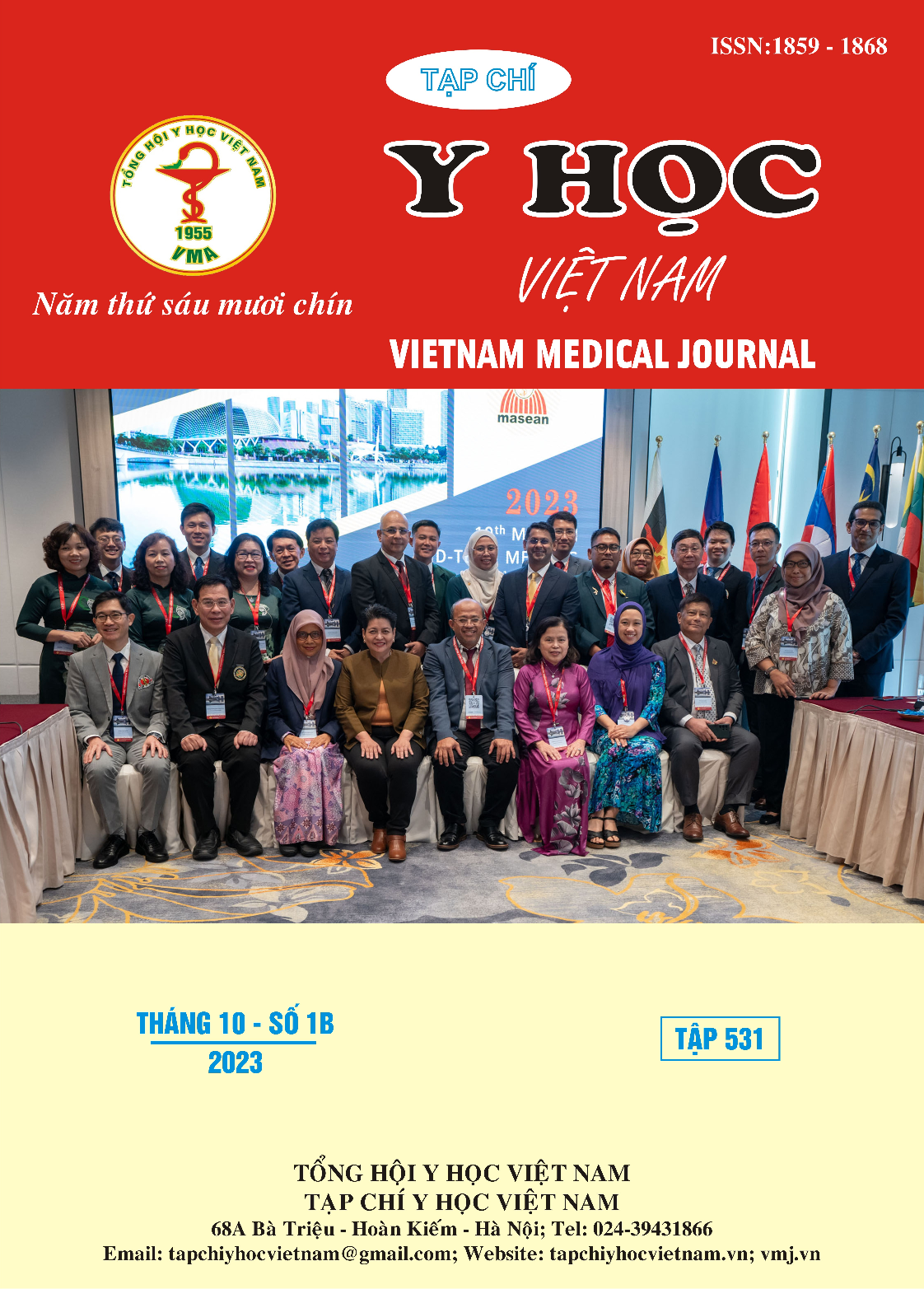THE ASSOCIATION OF THE EXPRESSION LEVEL AND PKLR GENE POLYMORPHISM WITH THE TOXIC EQUIVALENCE OF THE POLYCHLORINATED DIBENZOFURAN (PCDDs), POLYCHLORINATED DIBENZOFURAN (PCDFs) AND PCDD/PCDFs IN INDIVIDUALS EXPOSED TO DIOXIN DERIVED FROM AGENT ORANGE
Main Article Content
Abstract
Objectives: The study aims to evaluate the relationship between copy number variation, rs3020781 polymorphism PKLR gene expression levels and pyruvate kinase enzyme activity with the total toxic equivalent (TEQ) of PCDDs, PCDFs and PCDD/PCDFs in blood in people exposed to dioxin derived from Agent Orange. Methods: including 100 people exposed to dioxin derived from Agent Orange. Using the real-time PCR method to determine the mRNA expression levels and copy number variation of the PKLR gene; using Sanger gene sequencing method to determine genotype distribution at rs3020781 polymorphism and ELISA method to determine pyruvate kinase enzyme activity. Results: There was no association between copy number (unrounded) of the PKLR gene and TEQ of PCDD (Polychlorinated dibenzo-p-dioxin), PCDFs (Polychlorinated dibenzofuran) and PCDD/PCDFs. However, there was an association between TEQ of PCDD and PCDD/PCDFs with copy number groups (rounded) and genotypic distribution at rs3020781 polymorphism of PKLR gene, with p<0.05. The mRNA expression levels of the PKLR gene were moderately positively correlated with the TEQ of PCDD and PCDD/PCDFs, with the correlation coefficients r=0.52 and r=0.506, respectively, p<0.01. However, pyruvate kinase enzyme activity was moderately inversely correlated with TEQ of PCDD, PCDD/PCDFs, insignificantly with TEQ of PCDFs with the correlation coefficients: r=−0.514 and r=-0.518, and r=-0.293, respectively, p<0.01. Conclusion: exposure to dioxin derived from Agent Orange can affect the mRNA expression levels of the PKLR gene and pyruvate kinase enzyme activity.
Article Details
Keywords
copy number variation, rs3020781, pyruvate kinase.
References
2. Faik I., van Tong H., Lell B., et al. (2017). Pyruvate kinase and Fcγ receptor gene copy numbers associated with malaria phenotypes. The Journal of infectious diseases, 216(2): 276-282.
3. Forgacs A. L., Kent M. N., Makley M. K., et al. (2011). Comparative Metabolomic and Genomic Analyses of TCDD-Elicited Metabolic Disruption in Mouse and Rat Liver. Toxicological Sciences, 125(1): 41-55.
4. Livak K. J. and Schmittgen T. D. (2001). Analysis of relative gene expression data using real-time quantitative PCR and the 2− ΔΔCT method. methods, 25(4): 402-408.
5. Prokopenko I., Zeggini E., Rayner N., et al. (2007). High-density association mapping and comprehensive tagging of the type 2 diabetes linkage region on chromosome 1q in 4 European populations. DIABETOLOGIA, 50.
6. Vuong N. B., Quang H. V., Tong H. V., et al. (2023). Association of PKLR gene copy number, expression levels and enzyme activity with 2,3,7,8-TCDD exposure in individuals exposed to Agent Orange/Dioxin in Vietnam. Chemosphere, 329: 138677.
7. Wang X., Gardner K., Tegegn M. B., et al. (2022). Genetic variants of PKLR are associated with acute pain in sickle cell disease. Blood Adv, 6(11): 3535-3540.
8. Weber L. W., Zesch A. and Rozman K. (1991). Penetration, distribution and kinetics of 2,3,7,8-tetrachlorodibenzo-p-dioxin in human skin in vitro. Arch Toxicol, 65(5): 421-8.


